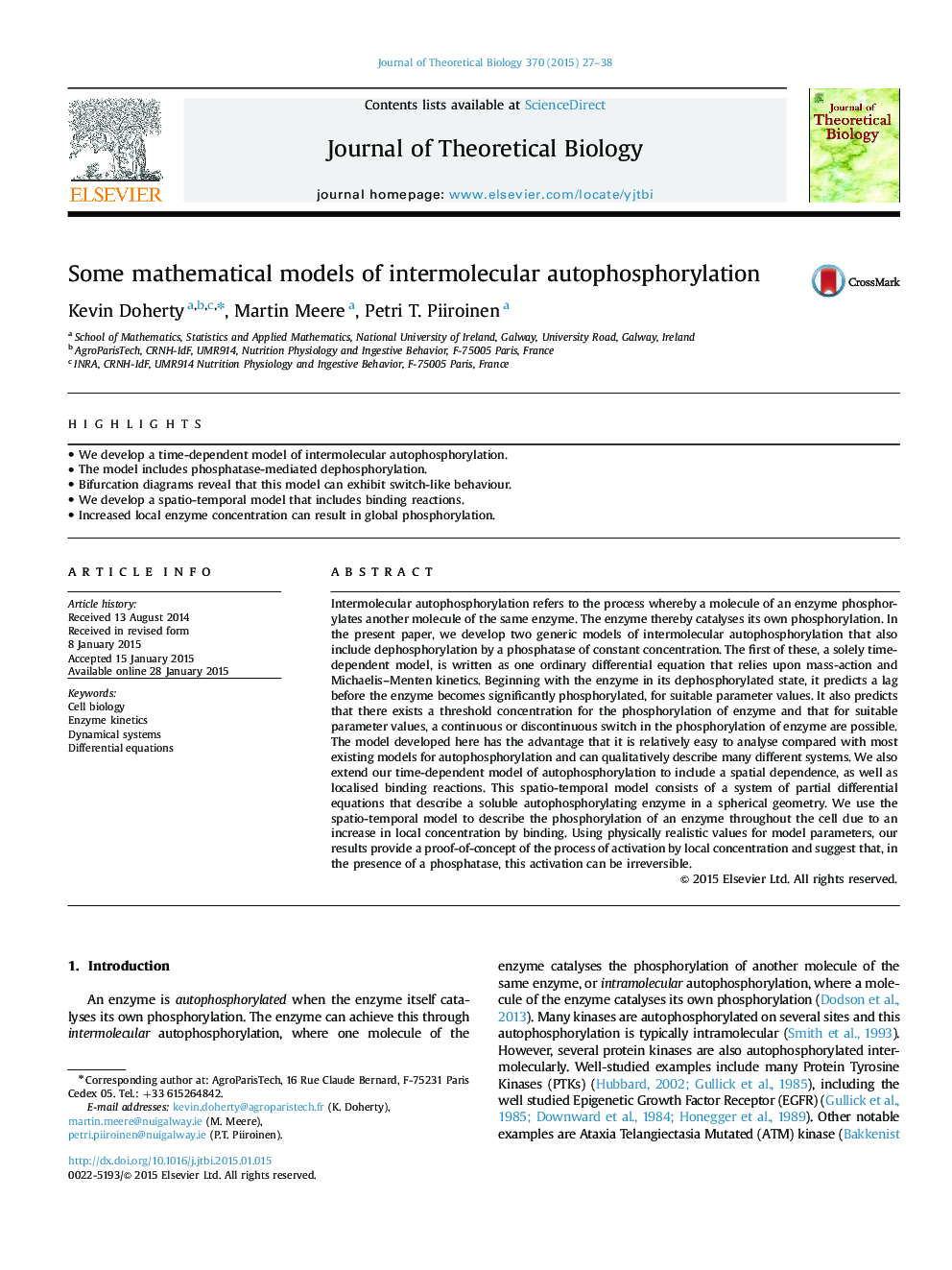| Article ID | Journal | Published Year | Pages | File Type |
|---|---|---|---|---|
| 6369905 | Journal of Theoretical Biology | 2015 | 12 Pages |
Abstract
Intermolecular autophosphorylation refers to the process whereby a molecule of an enzyme phosphorylates another molecule of the same enzyme. The enzyme thereby catalyses its own phosphorylation. In the present paper, we develop two generic models of intermolecular autophosphorylation that also include dephosphorylation by a phosphatase of constant concentration. The first of these, a solely time-dependent model, is written as one ordinary differential equation that relies upon mass-action and Michaelis-Menten kinetics. Beginning with the enzyme in its dephosphorylated state, it predicts a lag before the enzyme becomes significantly phosphorylated, for suitable parameter values. It also predicts that there exists a threshold concentration for the phosphorylation of enzyme and that for suitable parameter values, a continuous or discontinuous switch in the phosphorylation of enzyme are possible. The model developed here has the advantage that it is relatively easy to analyse compared with most existing models for autophosphorylation and can qualitatively describe many different systems. We also extend our time-dependent model of autophosphorylation to include a spatial dependence, as well as localised binding reactions. This spatio-temporal model consists of a system of partial differential equations that describe a soluble autophosphorylating enzyme in a spherical geometry. We use the spatio-temporal model to describe the phosphorylation of an enzyme throughout the cell due to an increase in local concentration by binding. Using physically realistic values for model parameters, our results provide a proof-of-concept of the process of activation by local concentration and suggest that, in the presence of a phosphatase, this activation can be irreversible.
Related Topics
Life Sciences
Agricultural and Biological Sciences
Agricultural and Biological Sciences (General)
Authors
Kevin Doherty, Martin Meere, Petri T. Piiroinen,
